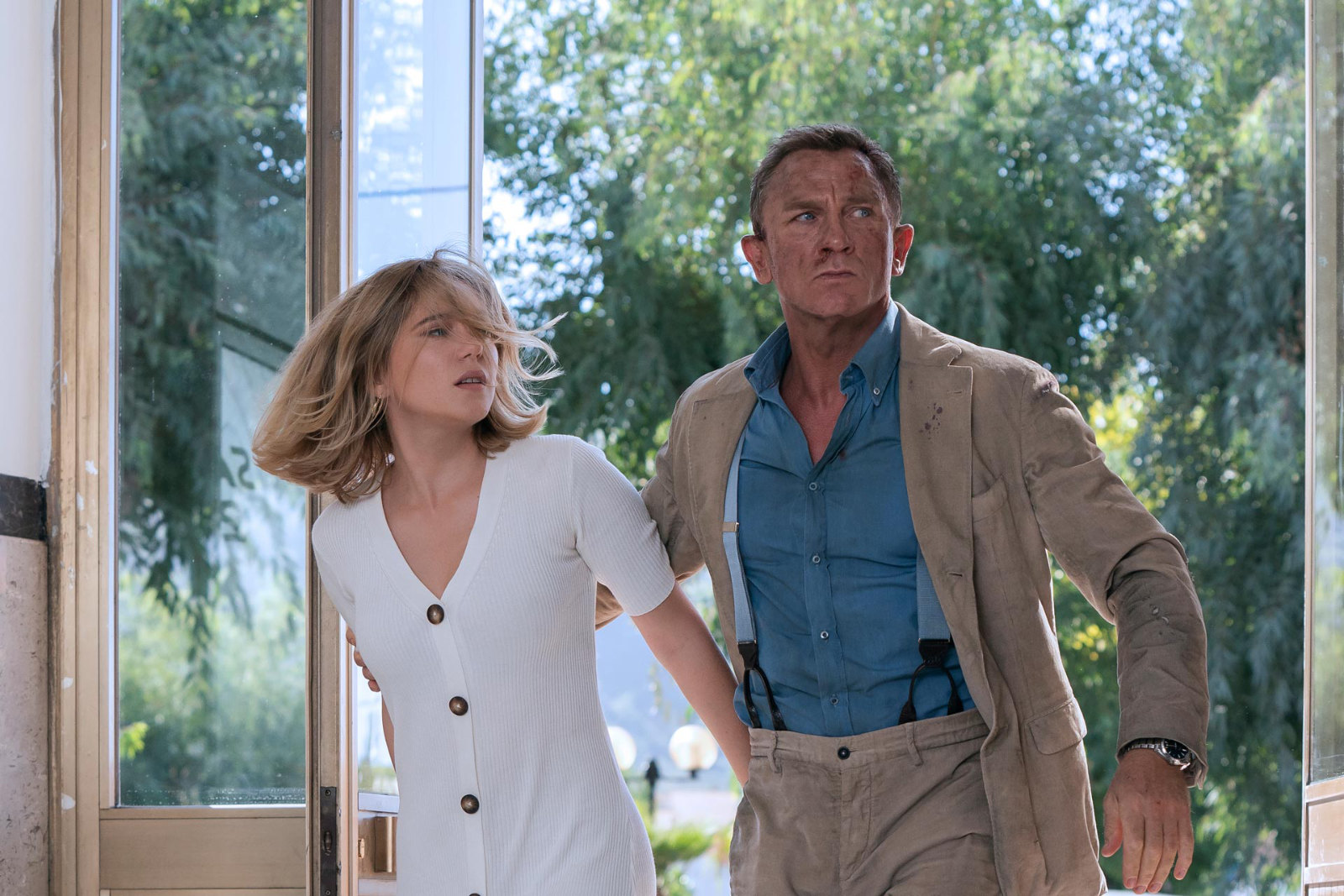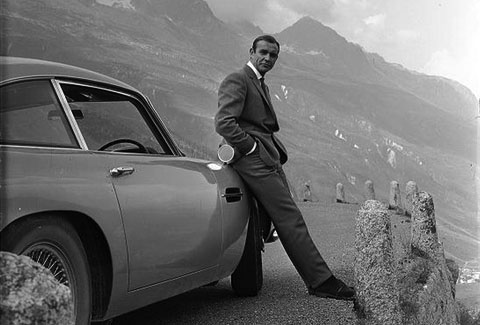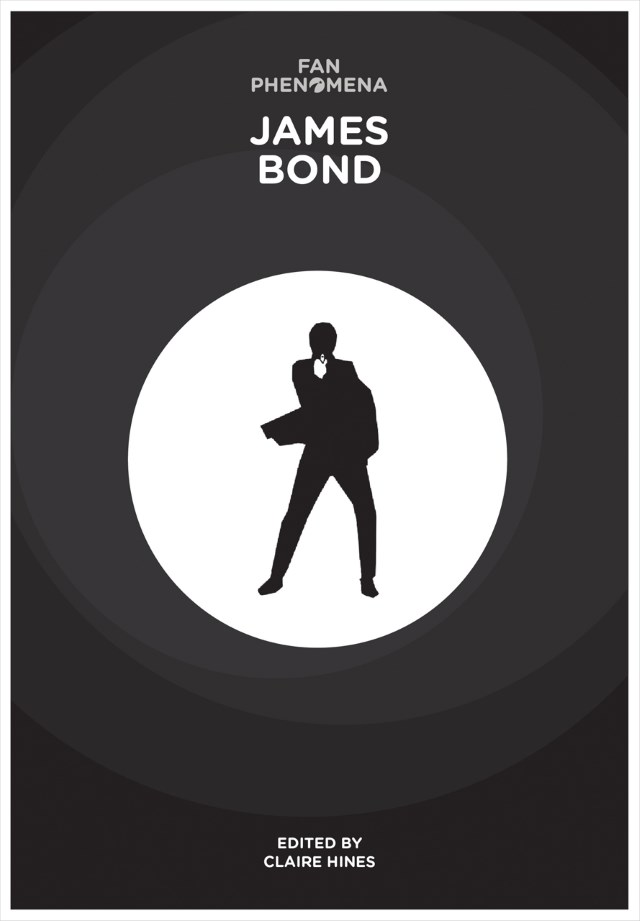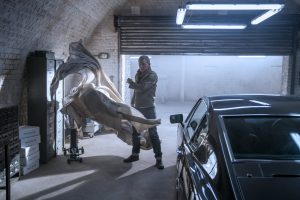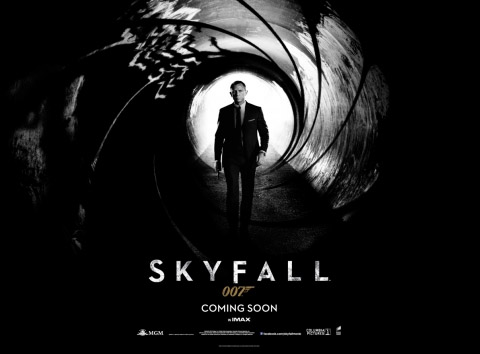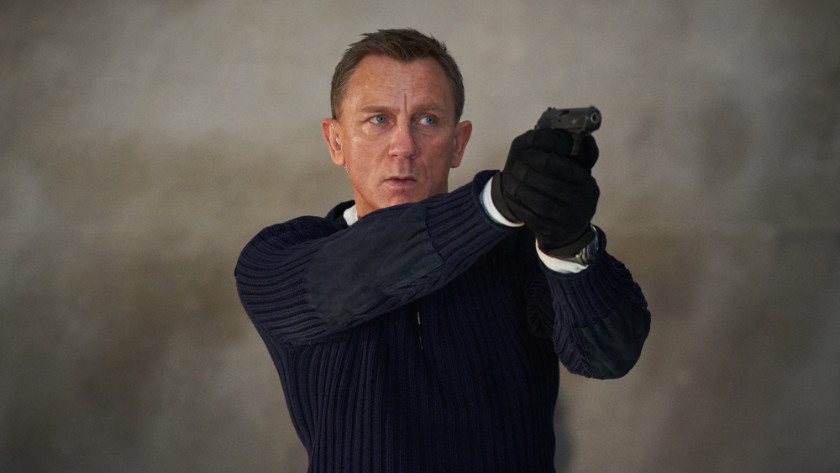

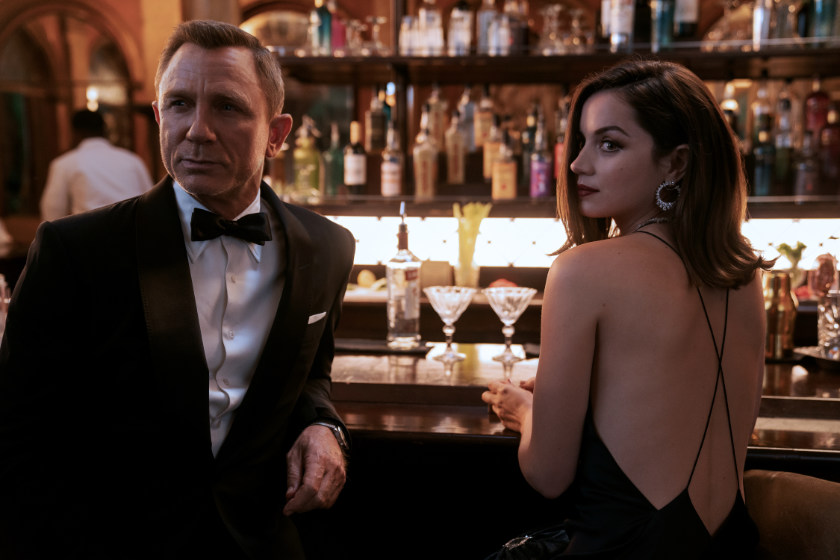
Eon Productions LLC/MGM
Header image: Madeleine Swann (Léa Seydoux) and James Bond (Daniel Craig) have their holiday plans upset. Above, from top: Daniel Craig as James Bond in No Time to Die. The Aston Martin V8 from The Living Daylights makes a return. James Bond (Daniel Craig) and Cuban agent Paloma (Ana de Armas) prepare to infiltrate a party.
I was originally excited by the prospect of seeing No Time to Die, the 25th Eon Productions James Bond movie, in April 2020. So often delayed because of COVID-19, it finally arrived on New Zealand shores today (October 7), with barely a ripple, some of my contacts not knowing that the latest Bond was even imminent.
If only it was dangled in front of countries that did well with their pandemic responses, as a reward—we’d have seen it over a year ago.
No Time to Die does deserve more hype because it’s a far more worthy contender to the cinematic Bond canon than the disappointing, cartoonish Spectre, a film panned by many, yet it still enjoyed a healthy promotion along with decent attendance figures. This 25th outing, and Daniel Craig’s fifth and final, deserves to do better.
It is an epic—the longest Bond film to date, clocking in at 163 minutes. But it’s handled incredibly well by director Cory Joji Fukunaga, with beautiful cinematography by Linus Sandgren. Most of all, this is Craig’s show, and, as critics said with his début in 2006’s Casino Royale, he gives it more depth than the script (by regulars Neal Purvis and Robert Wade, with Phoebe Waller-Bridge and Fukunaga) possesses.
At its core, this is a love story, and sees the return of Léa Seydoux, the first leading lady to appear in two Bond films in the same role, with Craig’s Bond having his emotional journey through it. Seydoux is a fine actress, and like Craig, she is allowed to shine far more in this outing (and show a stronger side as she protects the ones she loves), rather than someone who needed rescuing.
Rami Malek is, like Christoph Waltz’s Ernst Stavro Blofeld before him, not as menacing as, say, Javier Bardem in Skyfall. His plan may be sinister—a techno-biological weapon that suggests global virus spreads were in the scriptwriters’ consciousness before COVID-19—but as his Lyutsifer Safin compares himself with Bond (it’s a James Bond movie, it’s customary to have a chat with one’s nemesis) his path to evil is more a matter of perspective. Most of us would view him as evil, but he doesn’t. And his motive certain surpasses the preposterous scripting and ret-conning of Spectre which feebly tied together Craig’s first three films as somehow linked to a supervillain being jealous of a foster brother.
Thank goodness we didn’t have to deal with Waltz’s “Brofeld” too much—my view is, if Fleming gives a back-story to character, why reinvent it with something so contrived?—as the character’s only in one scene. Ana de Armas is far more memorable in her scene, one that blends action and humour better than in any earlier Craig Bond. Indeed, Fukunaga gives good Bond and salvages the direction in which the films were heading.
I had dreaded that this would go down the comic-book path, as DC and Marvel “universes” seem to be all the rage, but Fukunaga dishes out style and brings the Bondian world into the 2020s. Everything is beautifully shot, and it’s the small details that enhance the story: Safin’s workers, for instance, who show unusual deference to their boss. How did they get this way? Are they believers? Or brainwashed? It’s not explained, and we don’t need an explanation, but it’s a clever touch.
It looks stunning, especially the scenes in Matera, the Faroe Islands, and Norway, as well as Ian Fleming’s real Jamaica home at Goldeneye. The revised gunbarrel sequence is a surprise, its ideas executed well. The Aston Martins, Jaguars and Land Rovers that feature are a great tribute to British-born marques. Bond’s DB5 gets to strut its stuff again with its gadgets (happily, it’s a replica), and the V8 Vantage from The Living Daylights makes a return as Bond’s transport (how many garages does the man have Astons hidden in?). Bond’s even in a Toyota for the first time since 1967. Lashana Lynch’s Nomi pilots an Aston Martin DBS Superleggera, and even the Valhalla supercar has a cameo.
After the comical revision of Blofeld in Spectre, it’s easier to cope with some other changes to the literary canon this time round, especially in the context of Craig’s farewell from the series.
The script does take ideas from Fleming, in particular You Only Live Twice (a villain wearing traditional Japanese garb with his Garden of Death on a private island; as well as a passage read by Ralph Fiennes’ M at the end of the film; and Madeleine and Kissy Suzuki sharing at least one similarity) and On Her Majesty’s Secret Service (a biological weapon, Bond in love, and one of its most famous lines). It’s the latter’s 1969 film adaptation—the one starring George Lazenby—that provides additional inspiration here, with composer Hans Zimmer referencing John Barry on numerous occasions, with his OHMSS theme (not credited in the end credits) and ‘We Have All the Time in the World’ (which is).
Musically, Zimmer is happy to go with the lush strings in creating Barryesque moments, and we hear the return of the guitar, now performed by Johnny Marr, but as to be expected, there are long action cues that follow more of the David Arnold lead than the musical dramatism of John Barry in any of his Bonds or, say, The Specialist. The score, in its place in the film, is to my mind superior to Thomas Newman’s previous two, but it reminds us that Bond ultimately works best with Barry. Even 50-plus years on, you can take Barry’s Bond themes and transplant them and they work incredibly well.
In the context of the film, Billie Eilish’s theme song is perfectly suited, and Zimmer also quotes from this at appropriate moments. Vesper’s theme, by David Arnold, is heard once.
There are also two similarities to the 1967 version of Casino Royale, as apparently you can have more than one 007, and now David Niven is not the only Bond that you see in retirement. We had a sense of what the literary Bond would do in retirement in John Pearson’s James Bond: the Authorized Biography, and Craig’s recalls him. Daniel Kleinman’s title sequence has one homage to Maurice Binder’s first for the series in Dr No.
We have had 15 years of Craig’s Bond, and I am happy to write that the era ends on a high, with enough to satisfy younger moviegoers and older fans like me who have seen so many of the Bonds at the cinema. A second reboot is the likely next course, unless Lashana Lynch is the star of the 26th Eon James Bond film.—Jack Yan, Publisher and Founder

